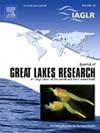Spatiotemporal dynamics of cyanobacterium Dolichospermum lemmermannii populations in a bloom-prone region of Lake Superior
IF 2.5
3区 环境科学与生态学
Q3 ENVIRONMENTAL SCIENCES
引用次数: 0
Abstract
Cyanobacterial Harmful Algal Blooms (cHABs) are increasingly common in marine and freshwater environments, including the Laurentian Great Lakes (LGL). Lake Superior has seen two large-scale cyanobacterial blooms (2012 and 2018) along the Wisconsin shoreline west of the Apostle Islands, caused by the cyanobacterium Dolichospermum lemmermannii. The drivers of bloom formation in Lake Superior are not yet certain, with many factors known to trigger blooms elsewhere in the LGL being absent in Lake Superior. Furthermore, little is known about D. lemmermannii’s spatial structure or phenology. Thus, we sought to track the seasonal population dynamics of D. lemmermannii to shed light on its growth, physiology, and abundance. In 2021, we used 16S rRNA amplicon and shotgun metagenomic sequencing to characterize spatiotemporal patterns of D. lemmermannii abundance and diversity along the bloom-prone Wisconsin shore of Lake Superior. In 2022, we performed net tows and direct colony counts in another localized area. No large-scale bloom event was observed during either year, though several smaller localized blooms were observed. D. lemmermannii abundances were low at nearly all sites and sampling times. Spikes in abundance occurred in July and September, particularly near Siskiwit Bay, a hotspot of bloom formation. We also observed a seasonal shift in heterocyte and akinete abundance indicative of late-season nutrient limitation. Most striking was the seasonal turnover of D. lemmermannii strains, suggesting strain adaptation to specific environmental conditions. These results offer valuable and actionable insights for managers and provide a foundation for additional work to clarify drivers of bloom formation in Lake Superior.
苏必利尔湖水华易发区蓝藻种群的时空动态
蓝藻有害藻华(cHABs)在海洋和淡水环境中越来越普遍,包括劳伦森五大湖(LGL)。苏必利尔湖在使徒群岛以西的威斯康星州海岸线上出现了两次大规模的蓝藻爆发(2012年和2018年),这是由蓝藻Dolichospermum lemmermannii引起的。苏必利尔湖水华形成的驱动因素尚不确定,许多已知的在LGL其他地方引发水华的因素在苏必利尔湖是不存在的。此外,人们对其空间结构和物候特征知之甚少。因此,我们试图追踪勒曼氏夜蛾的季节性种群动态,以阐明其生长、生理和丰度。在2021年,我们利用16S rRNA扩增子和霰弹枪宏基因组测序来表征苏必利尔湖威斯康辛湖岸易发生水华的D. lemmermannii丰度和多样性的时空格局。2022年,我们在另一个局部地区进行了净拖和直接菌落计数。在这两年中都没有观测到大规模的水华事件,尽管观测到几次较小的局部水华。在几乎所有的样点和采样时间,雷氏菌的丰度都很低。在7月和9月出现了丰度高峰,特别是在西斯基威特湾附近,这是一个水华形成的热点。我们还观察到异母细胞和肌酸盐丰度的季节性变化,表明季末营养限制。最引人注目的是D. lemmermannii菌株的季节性更替,表明菌株适应特定的环境条件。这些结果为管理者提供了有价值的、可操作的见解,并为进一步阐明苏必利尔湖水华形成的驱动因素提供了基础。
本文章由计算机程序翻译,如有差异,请以英文原文为准。
求助全文
约1分钟内获得全文
求助全文
来源期刊

Journal of Great Lakes Research
生物-海洋与淡水生物学
CiteScore
5.10
自引率
13.60%
发文量
178
审稿时长
6 months
期刊介绍:
Published six times per year, the Journal of Great Lakes Research is multidisciplinary in its coverage, publishing manuscripts on a wide range of theoretical and applied topics in the natural science fields of biology, chemistry, physics, geology, as well as social sciences of the large lakes of the world and their watersheds. Large lakes generally are considered as those lakes which have a mean surface area of >500 km2 (see Herdendorf, C.E. 1982. Large lakes of the world. J. Great Lakes Res. 8:379-412, for examples), although smaller lakes may be considered, especially if they are very deep. We also welcome contributions on saline lakes and research on estuarine waters where the results have application to large lakes.
 求助内容:
求助内容: 应助结果提醒方式:
应助结果提醒方式:


